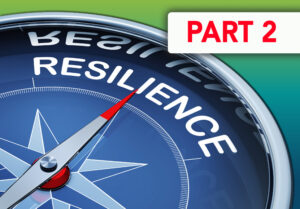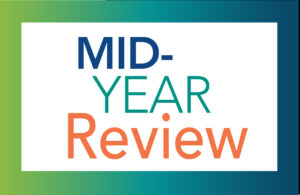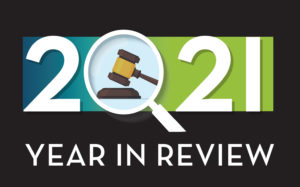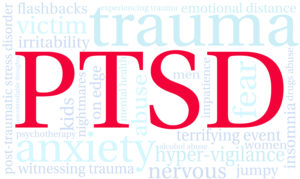October 3 marked the start of this year’s National Community Policing Week. First held in 2016, the week of engagement is meant to highlight efforts at “building stronger relationships between law enforcement and the communities they serve.”
 In a White House proclamation this year, there was a particular emphasis on health and wellness, acknowledging that “Working in law enforcement today is harder than it has ever been. Officers are expected to be everything all at once — from rescuing citizens from natural disasters, accidents, and crime to serving as counselors to people experiencing a mental health or substance use crisis”.
In a White House proclamation this year, there was a particular emphasis on health and wellness, acknowledging that “Working in law enforcement today is harder than it has ever been. Officers are expected to be everything all at once — from rescuing citizens from natural disasters, accidents, and crime to serving as counselors to people experiencing a mental health or substance use crisis”.
Officer health and wellness are a major topic in police research and funding priorities and a featured aspect of programming at this year’s IACP Conference in Dallas. What follows is a look at some of the most significant challenges to officer health and wellness and what can be done to address them.
Fatigue
Fatigue presents a range of symptoms that includes feelings of tiredness, depression, other mood disorders, and reduced mental and physical capacities. A lack of sleep can also lead to memory impairment, irritability, and stress-related illnesses like obesity and hypertension. Startling statistics show that more than 90 percent of law enforcement officers report being routinely fatigued, and 85 percent report driving while drowsy.
Beyond the health impacts, persistent fatigue creates real-world dangers for officers and the communities they serve. More officers are killed by unintended events, like auto collisions, than events related to the commission of felonies. In recent years, up to a third of officer deaths have involved automotive accidents. Research into officer fatigue and auto collisions indicates that as many as 46% of officers have nodded off while driving. The danger doesn’t stop with the end of a shift either, as many officers endure substantial commutes to reach their homes.
Burnout
A manifestation of trauma-induced stress is burnout, which is defined by chronic exposure to these stresses. It can manifest as excessive cynicism, detachment from one’s work, emotional exhaustion, and feelings of low professional achievement, to name just a few of the most prominent examples. A newly conducted review from 2020 analyzed 108 research studies to better understand operational stress and burnout among officers. The need to increase understanding of officer burnout is evident, with 56% of officers reporting in Pew Research Center’s 2017 Behind the Badge survey that they have become “more callous” since taking the job. The same study found that the feeling of burnout is linked to generally negative feelings toward the job.
PTSD
An officer’s work can often involve traumatic and intense situations during a shift. The Department of Justice estimates in a recent publication that roughly 15% of officers nationwide experience Post Traumatic Stress Disorder (PTSD) symptoms, which have the potential to impair decision-making and an officer’s ability to do their job. The paper highlights scientific research looking at the effects of PTSD on brain function, notably studying police officers themselves and not a general population sample group.
The long-term effects of untreated PTSD are not fundamentally different in police officers compared to the general public. Sleep quality is often affected, conditions related to anxiety and depression occur at a higher frequency, and there is generally a higher rate of drug and alcohol abuse among those experiencing the disorder. In some instances, there can also be effects on decision-making ability, especially under stressful circumstances.
There is research suggesting that PTSD affects the ability of police officers and other first responders to assess risk in stressful situations. This is especially critical in calls potentially involving the use of deadly force, in which officers must make split-second decisions informed by the perception of risk. A new study incorporates sophisticated EEG sensors to measure brain activity in officers during simulated police work. While the results are preliminary, they show “disruptions in rapid decision-making by an officer who has PTSD may affect brain systems due to heightened arousal to threats, inability to screen out interfering information, or the inability to keep attention.” In potentially life-or-death situations, the implications of these impacts are evident.
Resilience
Why do some officers “bounce back” from repeated exposure to traumatic events while others struggle, becoming less effective in their work and potentially turning to self-destructive behaviors like excessive drinking and self-medication? The answer likely lies in practicing resilience.
Even in peer-reviewed articles, academics and researchers admit there is not a broad consensus on a working definition of resilience. In its generalized sense, resilience is explained more as a concept that includes “positive adaptation, or the ability to maintain or regain mental health, despite experiencing adversity.”
The American Psychological Association identifies three primary facets of resilience that are essential in how people respond to stress and trauma:
The ways in which individuals view and engage with the world:
At its core, this aspect of resilience is inwardly focused and understood to be influenced by social, biological, and behavioral factors. The ability to understand stress responses and regulate one’s emotions has been shown to be an important factor. Foundational research underscores the importance of self-esteem, self-efficacy (a person’s belief in their capacity to act in ways necessary to reach specific goals), risk reduction, and openness to opportunities.
The availability and quality of social resources:
Social support is a critical component of both physical and mental health. At its most basic, these are social ties that can be relied upon for emotional, spiritual, physical, and financial support. These can take many forms, with family structures, social or professional networks, clergy, neighbors, and so forth being primary sources of social support.
Coping strategies:
These are conscious strategies used to counter negative emotions that come from stressful situations. These are, by their nature, adaptive methods with no one-size-fits-all approach to deploying specific strategies to specific stressors. There are also, of course, negative coping strategies like drug and alcohol abuse that can diminish the availability and efficacy of other support structures.
Taking Action
Undoubtedly, the challenges to officers’ health and wellness are as diverse as they are profound. To meet these challenges, law enforcement leaders will need to use every tool available to them to build resiliency and confront the inherent difficulties of working in law enforcement. National Community Policing Week underscores the need to seriously address officer wellness as a component of broader and demonstrably effective community policing efforts.
Benchmark Analytics is guided by the belief that data science and analysis are vital to personnel management strategies that build resilience and promote officer wellness. To learn more about our work, visit us at IACP 2022 in Dallas, booth 8201.
 As discussed in our
As discussed in our  Even in peer-reviewed articles, academics and researchers admit there is not a broad consensus on a working definition of resilience. In its
Even in peer-reviewed articles, academics and researchers admit there is not a broad consensus on a working definition of resilience. In its  This year’s legislation concerning police reform has, so far, been something of a departure from the previous two years – both in terms of pace and the subject of enacted bills. We’re seeing legislation take a more deliberate path forward after an initial flurry of legislation in 2020 and 2021 tackling hot-button issues like restraint tactics and duty to report. This more deliberate approach is reflected in legislation and funding priorities that emphasize mental health, both in law enforcement and in the larger communities they serve. Additionally, a waning “defund” movement has ceded ground to the notion that police need more resources, not fewer, to fulfill their duty to their communities amid rising crime and greater need.
This year’s legislation concerning police reform has, so far, been something of a departure from the previous two years – both in terms of pace and the subject of enacted bills. We’re seeing legislation take a more deliberate path forward after an initial flurry of legislation in 2020 and 2021 tackling hot-button issues like restraint tactics and duty to report. This more deliberate approach is reflected in legislation and funding priorities that emphasize mental health, both in law enforcement and in the larger communities they serve. Additionally, a waning “defund” movement has ceded ground to the notion that police need more resources, not fewer, to fulfill their duty to their communities amid rising crime and greater need. The need to retain corrections officers bears a lot in common with arguments for retaining law enforcement officers generally – training is costly and time-intensive, and there is an additional, implicit cost to knowledge and experience “walking out the door.” Much like in other law enforcement fields, corrections officers often leave the profession seeking
The need to retain corrections officers bears a lot in common with arguments for retaining law enforcement officers generally – training is costly and time-intensive, and there is an additional, implicit cost to knowledge and experience “walking out the door.” Much like in other law enforcement fields, corrections officers often leave the profession seeking  Of some 2,670 bills introduced into state legislatures across the country, 366 were enacted into law. Most, but not all, of these pieces of legislation are a part of broad reform efforts that began in 2020 in the wake of several high-profile incidents involving law enforcement.
Of some 2,670 bills introduced into state legislatures across the country, 366 were enacted into law. Most, but not all, of these pieces of legislation are a part of broad reform efforts that began in 2020 in the wake of several high-profile incidents involving law enforcement. This is just one example. Across the country, law enforcement leaders and policymakers are ramping up efforts to confront PTSD in the law enforcement community. What follows is a look at some of the impediments to effective treatment and the methods departmental leaders have developed to break down those barriers.
This is just one example. Across the country, law enforcement leaders and policymakers are ramping up efforts to confront PTSD in the law enforcement community. What follows is a look at some of the impediments to effective treatment and the methods departmental leaders have developed to break down those barriers. The understanding of PTSD has advanced rapidly in the last 100 years, primarily through the study of law enforcement officers, first responders, and military personnel. What once was thought of as a character deficiency is now understood as a complex set of intersecting psychological conditions brought on by abrupt or repeated exposure to trauma. As a part of a series on this blog, this post looks at how this understanding has evolved and how PTSD specifically affects police officers.
The understanding of PTSD has advanced rapidly in the last 100 years, primarily through the study of law enforcement officers, first responders, and military personnel. What once was thought of as a character deficiency is now understood as a complex set of intersecting psychological conditions brought on by abrupt or repeated exposure to trauma. As a part of a series on this blog, this post looks at how this understanding has evolved and how PTSD specifically affects police officers.
 As EAPs and wellness programs have grown more comprehensive and sophisticated in their approaches, the role of wellness in an officer’s family life has come to be seen as a mission-critical element of organizational culture. Family Matters: Executive Guide for Developing Family-Friendly Law Enforcement Policies, Procedures, and Culture,
As EAPs and wellness programs have grown more comprehensive and sophisticated in their approaches, the role of wellness in an officer’s family life has come to be seen as a mission-critical element of organizational culture. Family Matters: Executive Guide for Developing Family-Friendly Law Enforcement Policies, Procedures, and Culture,